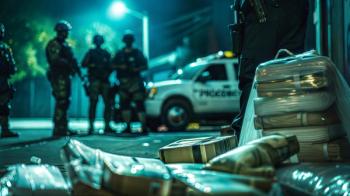
U.S. Government Invites Proposals for Opioid Detection
The Opioid Detection Challenge, launched by the U.S. Department of Homeland Security (DHS), in collaboration with U.S. Customs and Border Protection (CBP), the Office of National Drug Control Policy (ONDCP), and the U.S. Postal Inspection Service (USPIS), invites innovators to submit novel plans for rapid, nonintrusive detection tools that will help find illicit opioids being trafficked into the United States through international mail.
The Opioid Detection Challenge, launched by the U.S. Department of Homeland Security (DHS), in collaboration with U.S. Customs and Border Protection (CBP), the Office of National Drug Control Policy (ONDCP), and the U.S. Postal Inspection Service (USPIS), invites innovators to submit novel plans for rapid, nonintrusive detection tools that will help find illicit opioids being trafficked into the United States through international mail.
“CBP is excited to partner with DHS S&T to identify the next generation of interdiction tools,” said CBP commissioner Kevin McAleenan. “The technologies that emerge from this innovation challenge will be important elements of our multi-layered approach to combat the flow of opioids and other dangerous illicit drugs.”
The abuse of opioids such as OxyContin and fentanyl has created an unprecedented public health crisis in the United States, where in 2017, approximately 50,000 Americans died from opioid overdoses. Because large-scale drug trafficking of fentanyl can occur via small packages sent in the mail and through other avenues like ports of entry, detection is a significant challenge.
ONDCP Director Jim Carroll said that stopping the flow of illicit drugs coming into the United States is a crucial part of addressing the addiction crisis. “This competition will bring together innovators, experts, and technology leaders to help meet the challenges we face head on and accomplish our ultimate goalÂ-saving lives,” Carroll said.
“This competition is part of the comprehensive government effort to address the opioid crisis that is devastating too many American communities,” said DHS Senior Official Performing the Duties of the Under Secretary for Science and Technology William N. Bryan. “New tools and technologies offer a critical opportunity to more quickly and accurately detect opioids before they enter the United States.”
Innovators in a wide range of fields, from forensic science to industrial quality assurance to artificial intelligence, are called upon to help disrupt the flow of opioids into the United States.
Those interested in participating in the challenge must submit their plans by 4:59 PM ET, on April 24, 2019. The judges will evaluate the submissions and select up to eight finalists to advance to Stage 2 of the competition. Each finalist is expected to be awarded an equal share of the $800,000 Stage 1 prize pool.
In Stage 2, finalists will participate in a 14-week prototyping accelerator, during which they will develop their plans into testable prototypes and compete for an additional $750,000 in cash prizes. Stage 2 will culminate in a live test event hosted by DHS, where finalists will convene for on-site testing of their prototypes. One grand prize winner will be awarded $500,000, and one runner-up will be awarded $250,000.
For more information about the Opioid Detection Challenge, visit
Newsletter
Get essential updates on the latest spectroscopy technologies, regulatory standards, and best practices—subscribe today to Spectroscopy.





